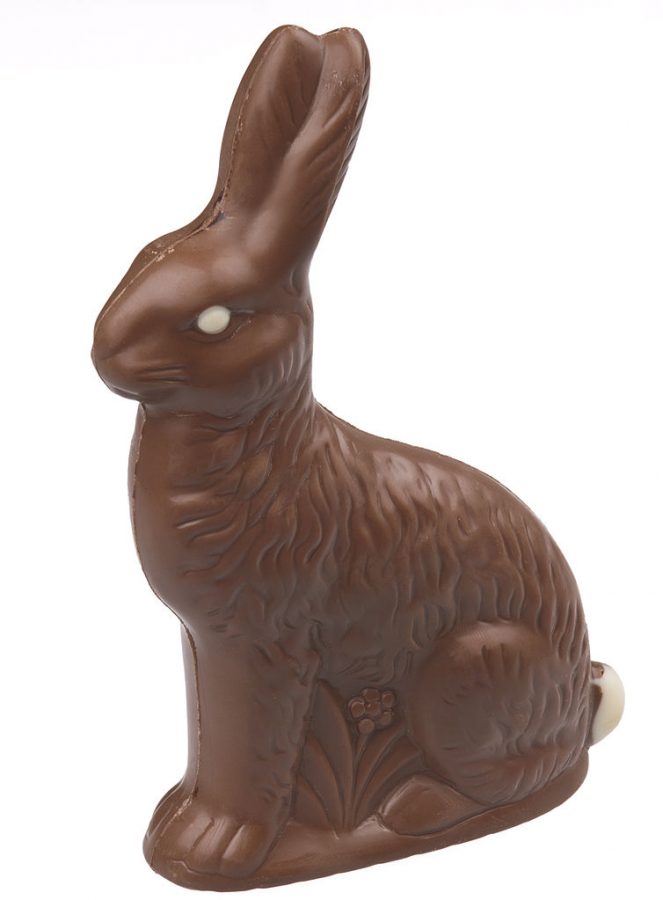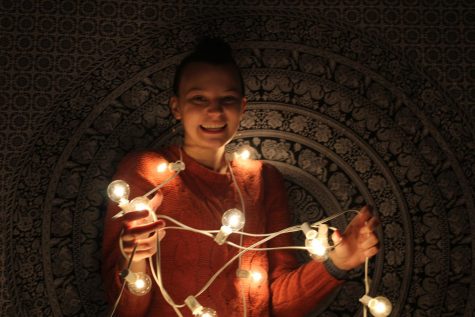Celebrating the history of the Easter Bunny
Buying Easter Bunnies in the form of chocolate has become a tradition across the United States as a celebration of Easter. The spread and increased importance of the Easter Bunny has led to it becoming a staple of the Christian holiday.
April 20, 2019
When thinking about Easter, a fluffy creature often comes to mind. The mascot for this April holiday is well-known across the United States: the Easter Bunny. However, this mysterious egg-laying, gift-bringing rabbit does not seem to be connected to the Christian holiday. Easter Sunday is an annual celebration of the resurrection of Jesus Christ in the Christian religion, but the seasonal chocolates and treats delivered by the Easter Bunny are not mentioned anywhere in the Bible.
Every year, excited children scramble around the house and the yard, collecting plastic eggs filled with sweets that the Easter Bunny has left for them. The exact origins of this mythical creature are a mystery, although the Bunny seems to stem from early pagan celebrations. The pagan traditions celebrated the goddess of dawn and spring, known as Eostre or Oestre, as well as the springtime renewal of life and fertility. The symbol for Eostre was a rabbit, because of the animal’s high reproduction rate, as the goddess was associated with new life during the spring.
Another common symbol for the Easter holiday is Easter eggs, which are delivered by the Easter Bunny. An ancient symbol for new life, the egg is also associated with the pagan festivals of spring. The decoration of Easter eggs dates back to at least the thirteenth century, when churches had their congregations abstain from eggs during Lent. People would decorate and paint the eggs to mark the end of the period of penance and would eat them when eggs were allowed to be consumed again, on Easter. A pagan legend states that the goddess Eostre arrived late one year, resulting in a long winter, and saw a bird frozen in the snow. Eostre felt bad for the bird and turned it into a rabbit, giving it the ability to lay multi-colored eggs on the day that the Festival of Eostre was celebrated.
The pagan festival for the goddess fell around the March equinox, the same time as the Christian celebration of Easter. The pagan, egg-laying bunny and the Christian holiday began to blend in Germany in the seventeenth century. As the Christian religion spread, the missionaries incorporated pagan ideas into the Christian holidays, resulting in the egg-laying Easter Bunny. The Germans took the pagan rabbit and turned it into Oschter Haws, translated to Easter Hare, a rabbit that laid eggs and brought treats to the children that behaved. The first legend of the Easter Bunny was documented in the 1500s, followed by the first story of a rabbit who laid eggs and hid them in the garden by 1680.
The Easter Bunny arrived in America along with German immigrants in the 1700s. Their children would make nests in which the rabbit could lay its colored eggs. Eventually, the tradition of the Easter Bunny spread across the United States, and the mythical bunny’s Easter deliveries expanded to include chocolates, sweets, and other presents, while the nests were replaced by Easter baskets. Nowadays, the Easter Bunny is celebrated as a customary symbol for Easter, bringing treats to eager children all around America.












